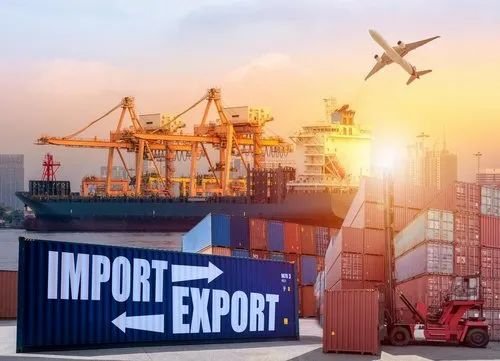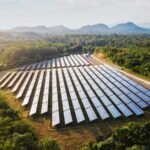The international landscape of trade in metals and raw materials is undergoing significant transformation, driven by a myriad of factors including technological advancements, geopolitical shifts, and evolving consumer demands. As countries strive for sustainability and seek to mitigate the impacts of climate change, the dynamics of metal supfply chains are being redefined.
Exploring Global Trends in Metal & Raw Material Trade Dynamics
This article from Steelbridge Export delves into the current patterns of trade in essential commodities, highlighting key developments that influence both the Global metal import and export worldwide. By examining these evolving trends, we gain valuable insights into how they may shape the future of global resource management and economic growth.
1. Shifting Patterns in Commodity Trade
The landscape of commodity trade is undergoing significant transformations, driven by a confluence of factors including geopolitical tensions, technological advancements, and shifting consumer preferences. In this section, we will delve into the emerging trends in commodity trade, particularly focusing on metals and raw materials, and how these changes are reshaping the global market.
Global Supply Chain Disruptions
Recent years have witnessed unprecedented disruptions in global supply chains. The COVID-19 pandemic served as a catalyst, exposing vulnerabilities in the logistics and supply chain frameworks that many businesses relied upon. This situation has led to:
- Increased Transportation Costs: Shipping costs have surged due to container shortages and port congestion, impacting the pricing of raw materials.
- Localized Sourcing: Companies are reevaluating their supply chains, opting for more localized sourcing strategies to mitigate risks associated with long supply routes.
- Shortages and Stockpiling: Commodities such as copper and aluminum have experienced shortages, leading businesses to stockpile these materials to ensure operational continuity.
Geopolitical Influences on Trade
Geopolitical tensions are reshaping trade dynamics, particularly in regions rich in mineral resources. The following factors are noteworthy:
- Trade Wars: Tariffs and sanctions have been implemented between major economies, influencing the flow of metals and raw materials. For instance, the U.S.-China trade war has affected the availability and pricing of various commodities.
- Resource Nationalism: Countries are increasingly asserting control over their natural resources, leading to policies that favor local companies over foreign investors. This shift can lead to supply shortages and increased prices on the global market.
- Environmental Regulations: Stricter environmental regulations in resource-rich countries can impact the extraction and exportation of metals, further complicating global supply chains.
Technological Advance ments and Their Impact
The integration of technology into commodity trading is revolutionizing how transactions are conducted and how materials are sourced. Key developments include:
- Blockchain Technology: This technology enhances transparency and traceability in commodity trading, reducing fraud and ensuring compliance with regulations.
- Artificial Intelligence: AI-driven analytics are enabling traders to make informed decisions based on real-time data, helping them to anticipate market fluctuations and adjust strategies accordingly.
- Automation in Mining: Innovations in mining technology, such as automation and remote operations, are improving efficiency and safety while reducing costs.
2. Key Factors Influencing Metal Markets
The dynamics of metal markets are influenced by a multitude of factors that interplay to shape pricing, demand, and supply. Understanding these key elements is essential for stakeholders engaged in the metal and raw material trade. Below are some of the most significant factors affecting metal markets today.
1. Global Economic Conditions
The overall health of the global economy plays a crucial role in determining metal prices and demand. Economic growth typically leads to increased industrial activity, thereby elevating the demand for metals. Conversely, during economic downturns, demand often diminishes, leading to falling prices. Key indicators include:
- GDP Growth Rates: Higher growth rates often correlate with increased construction and manufacturing activities, driving up metal demand.
- Consumer Confidence: When consumers feel optimistic about the economy, spending on infrastructure and housing tends to rise, impacting metal consumption.
2. Supply Chain Dynamics
The supply chain for metals is complex and affected by several factors, including extraction, processing, and distribution. Disruptions at any stage can lead to significant fluctuations in market prices.
- Mining Production: Changes in mining output due to labor strikes, natural disasters, or political instability in key producing countries can drastically affect supply.
- Logistics and Transportation: Challenges in transportation, such as shipping delays or increased fuel prices, can lead to supply shortages and price surges.
3. Technological Advancements
Innovation in mining and metallurgical processes can influence metal markets by improving efficiency and reducing costs. Emerging technologies such as automation, AI, and improved recycling methods are reshaping the industry.
- Automation: Enhanced automation in mining can lower operational costs and increase output, potentially stabilizing prices.
- Recycling Technologies: Advances in recycling can reduce the demand for virgin metals, influencing market dynamics and pricing.
4. Geopolitical Factors
Geopolitical tensions can create uncertainty in metal markets. Trade policies, tariffs, and sanctions can all have immediate effects on metal prices and availability.
- Trade Agreements: Favorable trade policies can enhance metal flows between countries, while tariffs may restrict them, leading to price volatility.
- Regional Conflicts: Political unrest in metal-rich regions can disrupt supply chains and elevate prices due to perceived risks.
3. Emerging Economies in Resource Exchange
The landscape of global trade is undergoing a significant transformation, particularly in the context of emerging economies. These nations are increasingly becoming pivotal players in the exchange of resources, particularly metals and raw materials. Their involvement is reshaping traditional trade dynamics and fostering new economic relationships on a global scale.
Defining Emerging Economies
Emerging economies, often characterized by rapid growth and industrialization, typically experience a transition from low-income to middle-income status. These countries usually exhibit the following traits:
- Economic Growth: Sustained GDP growth rates that outpace those of developed nations.
- Industrialization: A shift from agriculture-based economies to more industrial and service-oriented structures.
- Increasing Foreign Investment: Attracting foreign direct investment (FDI) which bolsters local industries and infrastructure.
The Role of Emerging Economies in Resource Exchange
Emerging economies have emerged as key players in the global resource exchange market, primarily due to their abundant natural resources, growing consumer markets, and evolving technological capabilities. Their role can be articulated through several key aspects:
Resource Richness
Many of these nations possess vast reserves of essential metals and minerals, such as:
- Minerals: Countries like Brazil and Chile are renowned for their copper and lithium reserves, crucial for electronics and renewable energy technologies.
- Precious Metals: South Africa and Russia dominate the gold and platinum markets, influencing global prices.
Strategic Partnerships
Emerging economies are increasingly forming strategic partnerships with developed nations and other emerging markets. These collaborations often focus on:
- Joint Ventures: Collaborations between firms from different countries to exploit mineral resources more effectively.
- Trade Agreements: Bilateral and multilateral trade agreements that enhance resource exchange and lower tariffs.
Technological Advancements
Investment in technology is transforming the extraction and processing of raw materials in emerging economies. Innovations include:
- Automation: Enhancing efficiency and safety in mining operations.
- Recycling Technologies: Developing methods to reclaim metals from electronic waste, reducing environmental impact.
conclusion
In conclusion, the landscape of metal and raw material trade is undergoing a profound transformation driven by a convergence of geopolitical, technological, and economic factors. As global commodity trade shifts in response to emerging challenges such as supply chain disruptions and evolving consumer demands, stakeholders must remain agile and adaptable. The increasing influence of emerging economies marks a significant shift in traditional trade dynamics, presenting both opportunities and challenges. These nations, rich in resources and rapidly industrializing, are carving out a critical role in the global market, necessitating strategic collaborations and innovative approaches to resource management. However, the interplay of market volatility, environmental considerations, and technological advancements underscores the complexity of navigating this evolving landscape. As the industry moves toward sustainability and ethical sourcing, the ability to respond effectively to these trends will determine the future success of stakeholders in the global metal trade. Embracing these changes will be essential for fostering resilience and ensuring a balanced and sustainable growth trajectory in the years ahead.
read more:
- EPCF Model Explained: Transforming Solar Energy Projects in Emerging Markets
- Comprehensive guide to buying and marketing phosphate concentrates
FAQs on Global Metal and Raw Material Trade Dynamics
- 1. What are the current major disruptions affecting global metal supply chains?
Recent disruptions include increased transportation costs due to container shortages and port congestion, localized sourcing strategies, and shortages of key metals like copper and aluminum, leading to stockpiling. - 2. How do geopolitical factors influence metal and raw material trade?
Trade wars, resource nationalism, and stricter environmental regulations impact pricing, supply availability, and trade flows by affecting export policies and increasing market uncertainties. - 3. What role does technology play in transforming metal commodity trade?
Technologies like blockchain improve transparency, AI enhances market analytics, and automation in mining boosts efficiency and safety while reducing operational costs. - 4. How do global economic conditions affect metal markets?
Economic growth increases demand for metals due to industrial expansion, while economic downturns reduce demand and depress prices. Key indicators include GDP growth and consumer confidence. - 5. What supply chain factors impact metal market dynamics?
Mining output variability, transportation challenges, fuel costs, and political instability in producer countries can cause supply shortages and price volatility.








